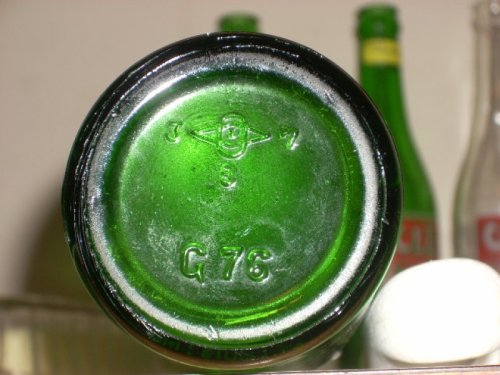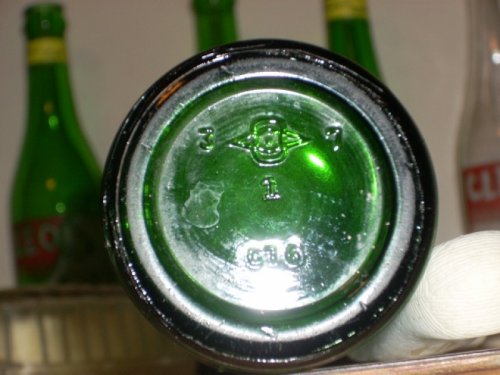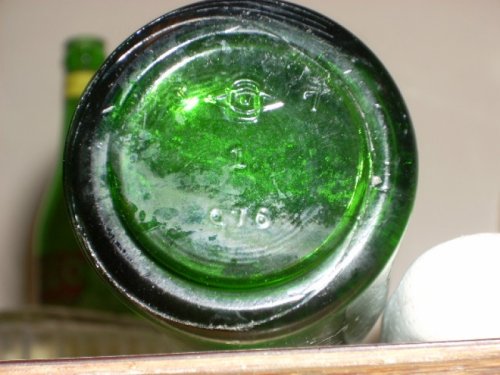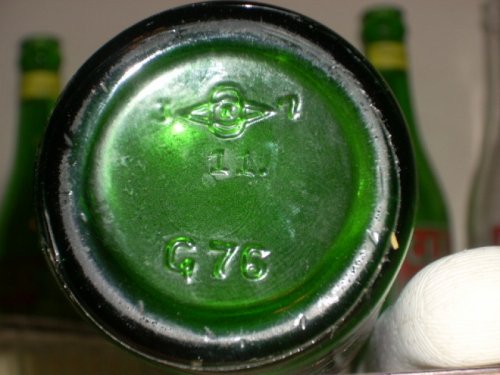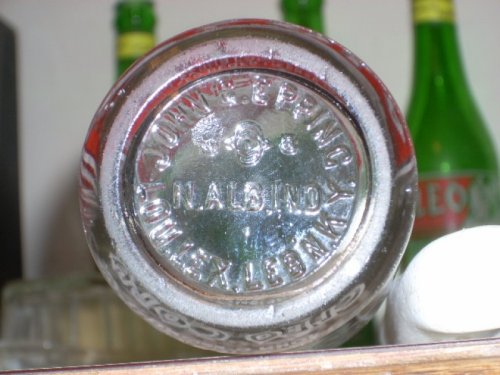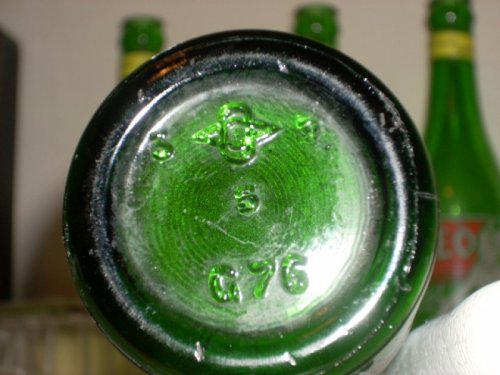Let's look at the bottoms of a six pack of Cleo Colas, shall we?
We all know Cleo Cola is a very early painted label...and, ohh la la, what a label. I want to share what these Cleo Cola bottles tell me when I examine them. First let me point out the various pieces of information that appear on each an every Cleo bottles base.
There are five different bits of data on each bottle base. First is the Owens Illinois logo. The logo changes over the time-life of Owens/Illinios bottles...more on that later. There are three numbers that surround the logo icon. As many of us know the three numbers represent the bottling plant location, the dating code number and the somewhat mysterious 'mold' number. Correspondingly and in order, they appear appear left of the 'O/I', to the right of the 'O/I' and then below the 'O/I' (mostly). Then additionally there is, on these bottles, a number prefaced by a capitol 'G'. In the case of Cleo Cola, as all their bottles are an identical very plain and unembellished 12 oz bottle, the number is ' G 76 '.
Interesting that, because it supplies us with the first bit of hard data because it's obvious from these six (of six) samples that the G 76 probably has something to do with the bottle shape/design/size and it's manufacturer and not related to Cleo at all. The 'G' number is the same on all six examples.
The first: Cleo Cola from St Louis. Bottle made in O/I plant at Fairmount, West Virginia, as are all bottles in the sampling, represented by the '3' to the left of the very squat box-like 'O' part of the O/I logo. Then there is a '7' which we assume to represent the year 1937 to the logos right. It's third number, the 'mold' number, below the logo is an '8'. We might assume that this was the eighth mold made for bottle style G - 76.
Onward.

We all know Cleo Cola is a very early painted label...and, ohh la la, what a label. I want to share what these Cleo Cola bottles tell me when I examine them. First let me point out the various pieces of information that appear on each an every Cleo bottles base.
There are five different bits of data on each bottle base. First is the Owens Illinois logo. The logo changes over the time-life of Owens/Illinios bottles...more on that later. There are three numbers that surround the logo icon. As many of us know the three numbers represent the bottling plant location, the dating code number and the somewhat mysterious 'mold' number. Correspondingly and in order, they appear appear left of the 'O/I', to the right of the 'O/I' and then below the 'O/I' (mostly). Then additionally there is, on these bottles, a number prefaced by a capitol 'G'. In the case of Cleo Cola, as all their bottles are an identical very plain and unembellished 12 oz bottle, the number is ' G 76 '.
Interesting that, because it supplies us with the first bit of hard data because it's obvious from these six (of six) samples that the G 76 probably has something to do with the bottle shape/design/size and it's manufacturer and not related to Cleo at all. The 'G' number is the same on all six examples.
The first: Cleo Cola from St Louis. Bottle made in O/I plant at Fairmount, West Virginia, as are all bottles in the sampling, represented by the '3' to the left of the very squat box-like 'O' part of the O/I logo. Then there is a '7' which we assume to represent the year 1937 to the logos right. It's third number, the 'mold' number, below the logo is an '8'. We might assume that this was the eighth mold made for bottle style G - 76.
Onward.


